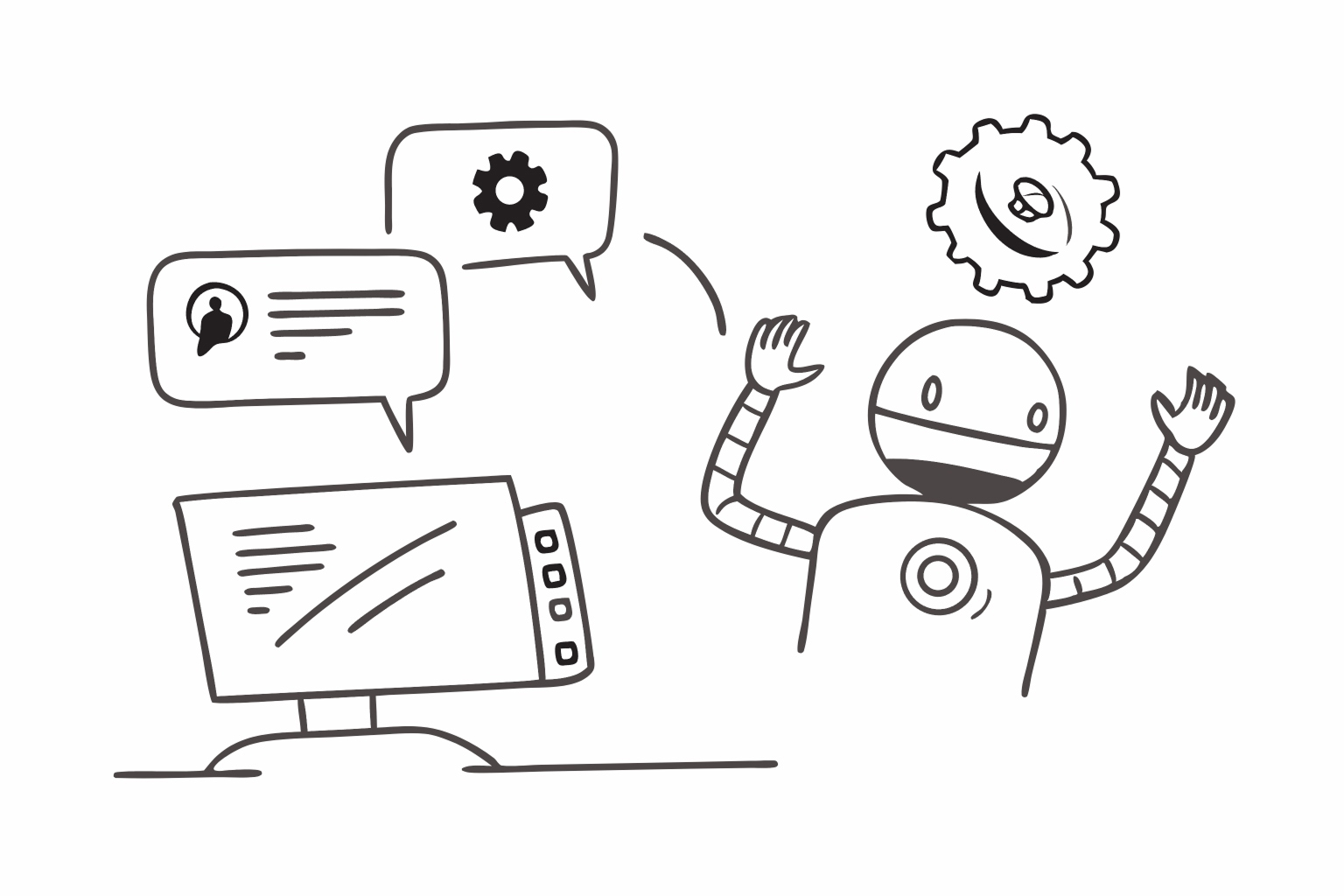Effective teamwork is crucial in today’s dynamic work environment. It requires clear communication, mutual respect, and defined roles. This article offers essential strategies and tools to boost team collaboration and productivity.
Key Takeaways
-
Effective teamwork relies on clear communication, defined roles, and mutual respect to build a cohesive and productive team environment.
-
Leveraging technology, such as collaboration tools and project management software, enhances remote teamwork by improving communication, tracking tasks, and facilitating real-time collaboration.
-
Leadership plays a critical role in fostering teamwork by leading by example, empowering team members, and providing necessary resources and support for collaboration.
Understanding Effective Teamwork

In the contemporary work landscape, collective effort plays a pivotal role. By pooling their respective strengths and sharing insights, individuals contribute to organizational goals in a unified manner. This collaboration epitomizes the idea that collectively we are more intelligent than we are individually, propelling teams towards accomplishments that might elude a single person. To facilitate effective teamwork, there must be an intentional cultivation of an environment ripe with communication, trustworthiness, and reciprocal respect — supported by modern team collaboration software.
Team leaders can reap substantial rewards from fostering such collaborative dynamics by distributing tasks effectively, broadening team capabilities and promoting professional growth. These aspects become even more critical for multidisciplinary teams where seamless integration of efforts is essential to avoid compartmentalization or work disruptions. Choosing the right team collaboration software helps structure roles and maintain workflow consistency across diverse functions.
For geographically dispersed groups working together at a distance, it becomes particularly important to leverage tools designed specifically for remote coordination like video conferencing platforms and integrated team collaboration software. These aid in maintaining regular interaction and nurturing cooperative settings among virtual members, enhancing both dialogue effectiveness as well as overall group efficiency through use of dedicated remote collaboration solutions.
Key Components of Effective Team Collaboration
Clear communication, established roles and responsibilities, along with mutual respect and trust are vital for successful team collaboration. They create a constructive and peaceful team atmosphere that guarantees every member is aligned and able to collaborate effortlessly.
Every one of these elements is essential in nurturing a collaborative team environment.
Clear Communication
Effective communication is crucial for the success of a collaborative team. When communication falters, it can lead to disinterest among team members and failures in project execution. Quick exchanges, particularly for straightforward tasks, help build strong relationships within the team and promote better collaboration. Utilizing communication tools helps streamline information dissemination amongst team members, minimizing misunderstandings and keeping everyone up-to-date. It’s equally important to embrace healthy disagreements as they provide an opportunity for teams to explore different viewpoints that can foster innovation and enhance processes.
Leveraging internal communication tools, such as MyMeets for capturing and summarizing key points from meetings, significantly boosts team collaboration by enabling instant updates, rapid feedback loops, and streamlined sharing of information across the board. Enhanced communication supports teams in working together more effectively, which contributes to improved efficiency with tasks at hand and successful achievement of objectives.
Defined Roles and Responsibilities
For team collaboration to be successful, it is crucial to establish distinct roles and responsibilities. This clarity fosters reliable cooperation and individual accountability within the team. When roles are undefined, it can result in redundancy of efforts, confusion among members, and tasks being overlooked. By delineating each person’s role clearly, any uncertainty is removed, which supports accountable participation toward achieving collective goals.
Project managers benefit immensely from task management tools that assist in the allocation of duties as well as defining who is responsible for what. These instruments enable project leaders to allocate workloads judiciously while keeping tabs on their advancement effectively. The application of these resources boosts overall team efficiency and propels them towards meeting set targets more proficiently.
Mutual Respect and Trust
A successful collaborative team is built upon the bedrock of mutual respect and trust, which creates a conducive atmosphere for creativity and innovation. This culture of trust is crucial for providing psychological safety, a key element necessary for proficient problem-solving and decision-making among team members.
Acknowledging employees’ contributions plays a significant role in establishing trust and respect. When team members feel valued and appreciated, their morale surges, prompting them to engage more constructively in collaboration. Cultivating such an environment where mutual respect and trust are paramount paves the way to enhanced productivity and collective success within the team.
For a deeper dive into the foundations of successful teamwork—including psychological safety, clear goals, and supportive structures—check out Harvard Business Review’s “The Secrets of Great Teamwork”.
Best Practices for Enhancing Team Collaboration

Improving team collaboration requires adopting effective communication strategies, establishing a culture of constructive feedback, and utilizing collaboration tools efficiently. Frequent check-ins, positive feedback mechanisms, and adept handling of these tools can markedly boost both productivity and team unity.
To fully grasp the advantages for your team, it’s important to delve into each practice more comprehensively.
Regular Check-Ins and Updates
Maintaining a consistent schedule for check-ins and updates contributes to a cohesive rhythm among project team members, which aids in the facilitation of communication, monitoring of progress, and assurance that objectives are aligned. The establishment and deliberation of definitive goals within meetings enable teams to concentrate their efforts and enhance teamwork. Utilizing a uniform agenda during these check-ins guarantees comprehensive coverage of pertinent issues.
Setting up routine gatherings for discussion alongside vigilant tracking helps prevent miscommunications while promoting prompt completion of assignments. Engaging collectively in goal-setting activities during these update sessions harmonizes priorities across the team, fostering increased involvement and resulting in heightened efficiency.
Constructive Feedback Loops
Feedback loops that are constructive play an essential role in promoting ongoing enhancement and expansion, as they assist teams in pinpointing areas where development is necessary while fostering the advancement of skills.
Fostering a culture centered on feedback enhances both individual performance and the collective efficacy of teams, which is indispensable for successful collaboration.
Utilizing Collaboration Tools
Collaboration tools are designed to improve the efficiency of workflow and enhance communication as well as task management, which is essential for successful project execution. They make it easier to arrange meetings, share documents, and exchange information within a team. Leading collaboration software such as Slack, Trello, and Google Drive elevate remote collaboration by offering functionalities like voice and video calls, screen sharing capabilities, and the ability to edit documents in real time—features that place them among the best team collaboration tools available.
By integrating automation features—as seen with platforms like MeisterTask and Flock—these tools ensure that no piece of data slips through unnoticed. This allows teams more bandwidth to concentrate on tasks requiring human input. The incorporation of automation into these collaboration instruments boosts productivity by diminishing the need for manual intervention while making processes more efficient.
Leveraging Technology for Improved Team Collaboration

Utilizing technological advancements plays an essential role in bolstering team collaboration. Contemporary tools are instrumental in promoting effective remote collaboration, allowing teams to pursue collective objectives notwithstanding their physical separation.
Software for project management, instruments for video conferencing, and platforms dedicated to team collaboration software along with document sharing are pivotal in sustaining both productivity and unity within teams that operate across varied locations.
Project Management Software
Project management software is essential for efficient task tracking and effective project oversight. Platforms such as Asana, Trello, and Monday.com provide capabilities like goal monitoring, tailor-made boards, and chronological timelines that assist teams in proficiently overseeing their duties. These tools bolster teamwork by incorporating messaging features designed for collaborative communication, keeping the entire team on the same page regarding project objectives.
The selection of suitable project management software requires an evaluation of functionalities offered, cost considerations, and compatibility with team requirements. Personalizing the display of tasks while employing an appropriate project management tool can elevate user interaction and transparency concerning assignments. This advancement leads to enhanced cooperation among team members as well as increased productivity levels.
To explore a comprehensive comparison of leading project management tools and their core features, visit TechRadar’s roundup of the best project management software of 2024.
Video Conferencing Tools
Tools for video conferencing have become indispensable for remote teams, providing a more impactful means of communication compared to conventional phone conversations. By mimicking the dynamics of physical meetings through direct face-to-face exchanges, features like screen sharing and group messaging enhance teamwork. Renowned platforms such as Zoom, Google Meet, and Microsoft Teams incorporate capabilities like screen sharing, the ability to record meetings, and chat options that are crucial in supporting efficient collaboration from afar.
Additionally, platforms like MyMeets build on these capabilities by offering automatic meeting transcription and smart summaries, helping teams stay aligned and focused on key decisions without the need for manual note-taking.
These tools play a vital role in ensuring that team members remain connected and up-to-date while mitigating feelings of isolation and fostering better group interactions. Utilizing these resources enables remote teams to sustain their effectiveness and unity as they strive towards shared objectives despite being separated by distance.
Document Sharing Platforms
Platforms for sharing documents enhance collaboration in real-time and streamline the workflow by providing convenient access to jointly used files. Services such as Google Drive that are based on cloud technology offer features like live editing, commenting capabilities, the ability to edit while offline, and document-sharing options that guarantee every team member can retrieve the most current versions of documents.
Google Workspace merges effortlessly with numerous team collaboration tools, fostering collaborative work across varied locales and gadgets. The crucial functionalities of effective real-time cooperation combined with refined workflows render these platforms essential team collaboration tools for any group effort involving teamwork.
Overcoming Common Challenges in Team Collaboration
Difficulties in collaborating as a team typically involve issues such as disagreements, lapses in communication, and objectives that do not coincide. It is essential to tackle these challenges to preserve an effective and congenial atmosphere within the team. Leveraging team collaboration tools can provide much-needed structure and transparency when resolving such issues.
To surmount hurdles and boost collaboration among team members, it’s important to resolve disputes, connect communication divides, and ensure everyone’s goals are on the same trajectory. Thoughtfully selected team collaboration tools often play a role in maintaining alignment and clarity throughout this process.
Managing Conflicts
Ensuring team harmony and productivity hinges on proficient conflict management. Encouraging diversity within the group can diminish tensions and improve teamwork. By resolving disagreements in a constructive manner, an environment of positivity and enhanced collaboration is cultivated. The integration of flexible team collaboration tools further facilitates constructive dialogue and resolution.
Bridging Communication Gaps
Breaking down communication barriers is essential for enhancing team collaboration, particularly within remote teams. It’s vital to dismantle any silos to enhance the flow of information across various functional areas. Adapting communication practices to suit a variety of cultural backgrounds helps guarantee that every member of the team has their voice recognized and valued. Developing standards for providing feedback can improve conversational dynamics and assist in balancing diverse viewpoints throughout collaborative efforts.
The use of video conferencing and instant messaging platforms plays a key role in closing the gaps in communication by enabling instantaneous interaction and swift exchange of details, ensuring that members of remote teams remain interconnected and well-informed. Choosing appropriate team collaboration tools is imperative for encouraging everyone’s active engagement, thereby creating an environment that supports both teamwork and inclusivity.
Aligning Goals and Objectives
It is crucial for successful teamwork that all members set and align their goals and objectives from the outset. Establishing precise targets prevents lagging outcomes by directing everyone towards a unified objective. Setting goals collectively not only prioritizes tasks, but also promotes engagement, creating an environment where team members feel both invested in and responsible for the shared vision.
Team meetings offer an opportunity for participants to discuss accomplishments and examine how they met their objectives. This process of looking back on what strategies were effective or which ones needed refinement contributes to improving productivity across the board. Well-structured team collaboration tools help document and revisit these insights consistently, reinforcing team alignment over time.
The Role of Leadership in Fostering Effective Teamwork

Leadership plays a pivotal role in cultivating successful team dynamics. By establishing a coherent vision, championing the tenets of collaboration, and exemplifying preferred conduct, leaders are instrumental in creating an environment conducive to effective teamwork. Essential leadership tactics include guiding by demonstration, enabling team members through empowerment, as well as providing them with necessary support and resources to maintain both productivity and unity within the group.
Leading by Example
Demonstrating collaborative behaviors as a leader effectively shapes team dynamics, prompting team members to emulate such conduct. Engaging in team endeavors not only demonstrates value for the efforts of members, but also cultivates an atmosphere of cooperation.
Creating a nurturing atmosphere bolsters both productivity and unity within a team.
Empowering Team Members
Granting team members authority and fostering their ability to make decisions autonomously boosts teamwork. By assigning responsibilities, individuals are inspired to take charge of their duties, instilling a sense of independence and responsibility. This empowerment strengthens mutual trust and fosters an environment ripe for collaboration.
Providing opportunities for team members to spearhead projects or ventures aids in honing their abilities and bolstering self-assurance. Such enablement is instrumental in the personal advancement of each member, thereby augmenting the collective achievement of the team. Cultivating an atmosphere where empowerment is prioritized not only improves cooperation but also propels efficiency forward.
Providing Support and Resources
For effective collaboration, leaders must ensure that teams have access to the necessary resources and support to foster a productive environment. Providing constructive feedback helps team members grow and improve, enhancing their collaborative output.
By offering the right tools and resources, leaders can help teams navigate challenges and work more effectively towards their goals.
Benefits of Effective Team Collaboration

Numerous advantages arise from effective team collaboration, such as a boost in productivity, improved innovation, and heightened employee satisfaction. These positives collectively enhance the organization’s success by fostering a constructive and efficient work atmosphere.
To appreciate their influence on both team dynamics and performance fully, it is valuable to delve into these benefits more deeply.
Increased Productivity
Working collaboratively, team members can enhance efficiency and productivity by sharing the workload. This approach to teamwork fosters a sense of motivation among employees as they work together towards common objectives. When individuals apply their unique strengths within a group setting, it leads to more effective performance and superior accomplishments.
In the realm of task management, specialized software plays an integral part in enhancing task automation and boosting overall efficacy. These systems assist teams in monitoring advancements, overseeing due dates, and guaranteeing timely completion of tasks. Enhanced collaboration paired with optimized processes through these tools translates into elevated levels of productivity and improved results for teams.
Enhanced Innovation
Collaboration in a team setting fosters innovative solutions and enhances creative problem-solving by bringing together diverse viewpoints. The exchange of different ideas during collaborative efforts improves the caliber of developed solutions.
These dynamic brainstorming sessions are supported by virtual collaboration tools, which empower teams to generate inventive results.
Greater Employee Satisfaction
Fostering strong teamwork can alleviate stress associated with work and heighten the feeling of contentment within a job role. Engaging in collaborative efforts instills a sense of community and achievement that transcends personal accomplishments, contributing to an increased feeling of commitment and well-being among employees.
Empowering team members by granting them authority over decisions bolsters their involvement and gives them a greater sense of responsibility. Cultivating such a culture centered on collaboration enables companies to boost employee satisfaction levels, leading to an enhanced positive atmosphere conducive to productive activities in the workplace.
How MyMeets Enhances Team Collaboration
MyMeets serves as an intelligent assistant for meetings, boosting team collaboration through the automation of meeting notes, compatibility with widely used tools, and fostering more effective meetings. It aids teams by capturing and transcribing discussions during meetings, chronicling key decisions, assignments, and valuable insights while simplifying the distribution of meeting results.
Consider discovering the ways in which MyMeets might enhance your collective teamwork endeavors.
Automating Meeting Notes
MyMeets integrates with widely-used platforms such as Zoom, Google Meet, and Microsoft Teams to record discussions while automatically identifying and logging essential elements like main topics, assignments, and consensus. This tool minimizes manual note-taking by automating the process of creating meeting minutes, which contributes to optimizing team communication and reducing time spent on such tasks. The efficiency gained from this automation enables teams to dedicate more hours weekly to pivotal activities and decision-making.
By syncing with popular collaboration tools, MyMeets amplifies teamwork effectiveness through the assurance that significant details are preserved. The software’s ability to systematically capture and arrange notes guarantees that all team members have immediate access to precise updates— a key aspect for successful group coordination.
Integrating with Popular Tools
MyMeets seamlessly syncs with widely-used platforms such as Slack, Trello, Asana, and Google Calendar to optimize the management of team workflows. By bolstering applications like Zoom or Slack with intelligent automation and synchronization capabilities, it promotes improved teamwork and helps teams operate more productively.
Improving Meeting Efficiency
MyMeets enhances the productivity of meetings by creating in-depth summaries that encapsulate critical decisions, assigned tasks, and valuable insights. These comprehensive records become instantly accessible within a user’s account once the meeting concludes, guaranteeing that every team member can obtain necessary information promptly. With just one click, users are able to distribute meeting results across their teams, curtailing the need for time-consuming manual communication and subsequent follow-ups.
By mitigating excessive meetings and decreasing laborious tasks, MyMeets fosters better coherence among team members while enabling them to concentrate on their principal responsibilities. The platform adeptly converts discussions into actionable assignments without delay or oversight—making certain all pertinent actions arising from a meeting are tracked and undertaken efficiently.
Summary
To realize successful team collaboration in 2025, it’s essential to merge unambiguous communication, well-established roles, reciprocal respect, and the appropriate use of collaboration tools. Teams can boost their efficiency and creativity by adopting best practices like consistent check-ins, beneficial feedback cycles, and embracing cutting-edge technology. MyMeets emerges as a prominent solution that refines meetings management with automatic note-taking features while seamlessly integrating with widely-used platforms to elevate teamwork productivity. We invite you to experiment with MyMeets for a transformed and more effective collaborative experience.
Frequently Asked Questions
What does MyMeets do for online meetings?
MyMeets simplifies your online meetings by offering quick recording, transcription, and analysis using AI, all with just one click.
It’s a hassle-free way to keep track of your discussions!
How does MyMeets help in team collaboration?
MyMeets boosts team collaboration by enabling quick sharing of meeting outcomes, decisions, tasks, and insights with just one click.
This ensures everyone stays on the same page and enhances productivity.
What platforms does MyMeets integrate with for automatic recording?
MyMeets integrates with Zoom, Google Meet, and Microsoft Teams for automatic recording. This makes it super convenient to capture your meetings without any extra hassle!
How can users connect their calendar to MyMeets?
To connect your calendar to MyMeets, just create an account and link it with Google Calendar to automatically sync your scheduled meetings.
It’s a simple way to keep everything organized!
What are the main advantages of using MyMeets?
Using MyMeets saves you time with its convenient data organization and note automation, while also offering high security and flexible integrations.
It’s a smart choice for streamlined meeting management!
Ready to simplify your meetings and boost team collaboration?
Try MyMeets for free and experience how effortless and productive your online meetings can be — all in just one click.



